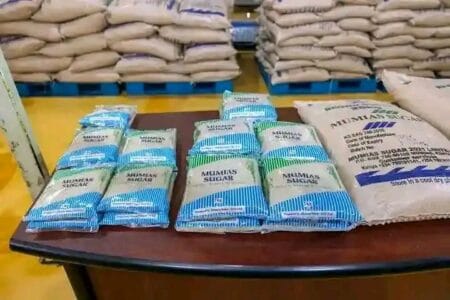Watermelon farming has grown to be a lucrative agribusiness in Kenya because of the excessive demand for clean, nutritious culmination. The warm tropical weather in maximum elements of Kenya gives ideal conditions for watermelon cultivation, making it a profitable mission for each small-scale and massive-scale farmer.
2. Startup Costs and Profitability
Initial Investment: With approximately Ksh 20,000, a farmer can start growing watermelons on a ¼ acre of land.
Expected Yield: On a ¼ acre, a farmer can produce 2,000–3,000 watermelons, depending on the range and management practices.
Market Price: Watermelons are bought at Ksh 30–100 per kilogram, depending on the season and market demand.

Profit Estimation: Farmers can earn Ksh one hundred 000+ per season, making it high-go-back funding.
3. Best Varieties for Kenyan Farmers
Some of the pleasant watermelon sorts suitable for Kenyan situations include:
Sugar Baby (early maturity, excessive sweetness)
Crimson Sweet (excessive yield, sickness resistance)
Charleston Gray (huge length, desirable transportability)
Asali F1 (rapid-growing, high market demand)
four. Ideal Climate and Soil Conditions
Temperature: Thrives in 24°C–30°C.
Soil: Well-drained sandy loam soil with pH 6.Zero-6.8.
Rainfall: Requires mild rainfall; however, prefers supplementary irrigation.
5. Watermelon Farming Process
Land Preparation: Clear weeds, plough the land, and add organic manure.
Planting: Use licensed seeds and plant with 1m spacing between rows.
Irrigation: Requires steady watering, particularly during flowering and fruiting stages.
Weed and Pest Control: Common pests consist of aphids, fruit flies, and spider mites. Diseases like anthracnose and powdery mould may be controlled through crop rotation and fungicides.
Harvesting: Ready for harvest in 75–90 days while the fruit base turns yellow and produces a hole sound whilst tapped.

6. Market Opportunities
Watermelons have a huge marketplace demand in Kenya, both locally and the world over. Major shoppers include:
Local markets and investors
Supermarkets and grocery stores
Schools, resorts, and hospitals
Export markets (e.g., Middle East and Europe)
7. Challenges in Watermelon Farming
Pest and Disease Management: Requires regular tracking.
Water Supply: Irrigation is important in dry regions.
Market Fluctuations: Prices vary, relying on supply and demand.
Transport and Storage: Perishable nature requires rapid distribution.
Watermelon farming in Kenya is a worthwhile agribusiness with short returns and high call for. With right-making plans, ailment management, and marketplace linkage, farmers can earn vast earnings from this challenge.











